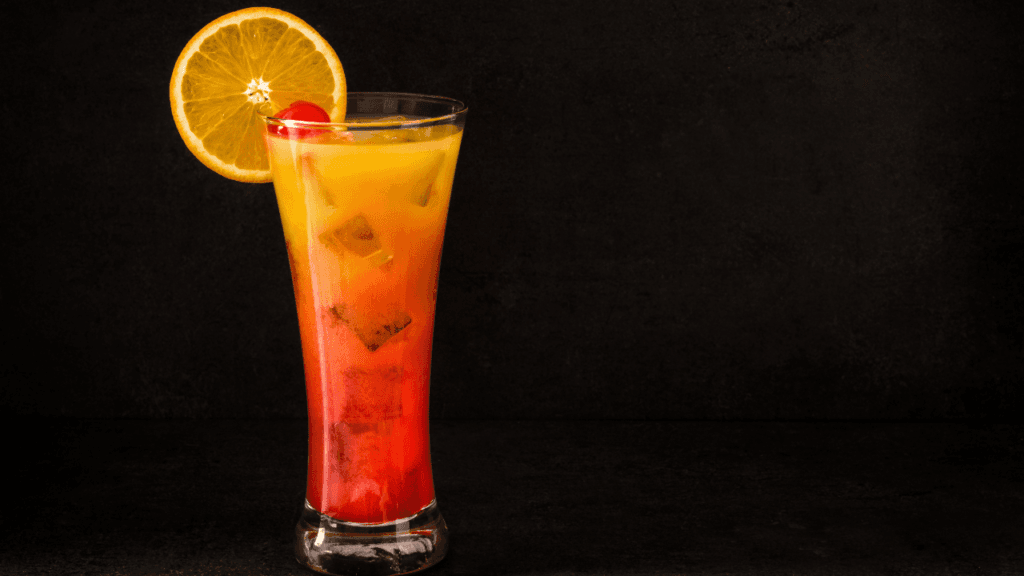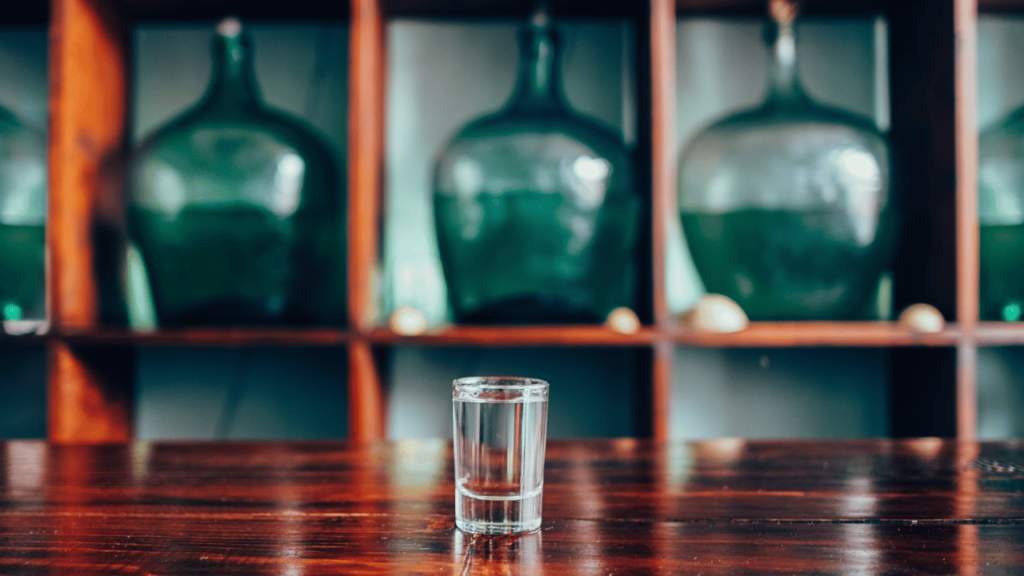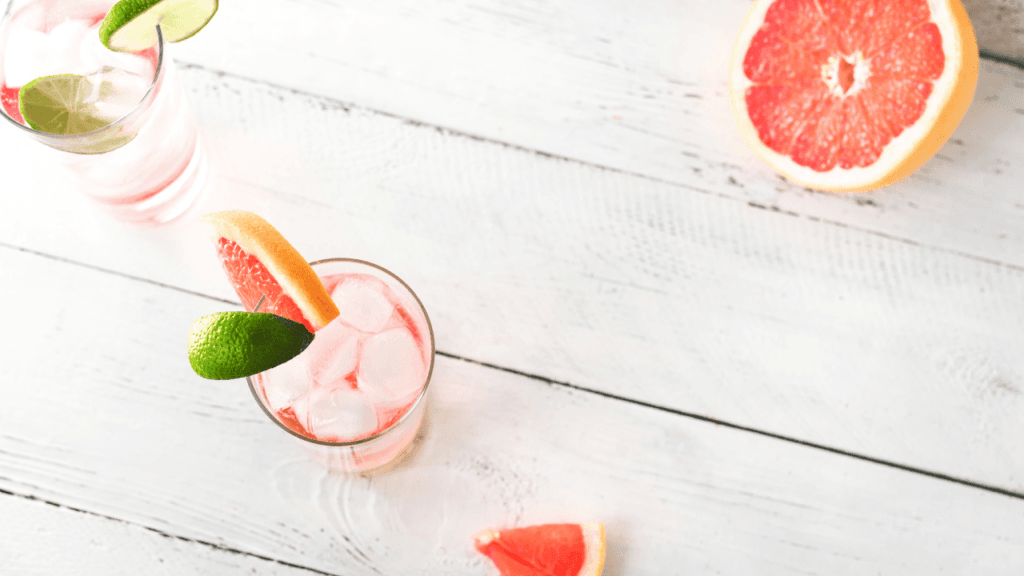Start an exciting journey into the world of agave spirits. Here, Mexico’s rich traditions come to life in every sip of tequila and mezcal. These drinks have won the hearts of many, with flavors that vary from soft and smooth to strong and smoky.
Tequila is mainly made from the blue weber agave in Jalisco. It’s made by steaming the agave hearts before distilling. This process gives tequila its unique tastes of vanilla, caramel, and spices. Whether it’s blanco, reposado, or añejo, tequila’s skill and variety have made it famous worldwide.
Mezcal, by contrast, is made with a more traditional method. It’s produced in places like Oaxaca and Durango. Mezcal gets its smoky taste from being roasted in underground pits. It comes in many forms, from joven to aged, inviting those who dare to try it to discover its rich flavors.
More and more people are enjoying tequila and mezcal on their own. They love the complex flavors each sip brings. Bartenders are also getting creative, making new cocktails that show off tequila and mezcal’s unique qualities.
Key Takeaways
- Tequila and mezcal are renowned agave spirits from Mexico, each with unique production methods and flavor profiles.
- Tequila is crafted mainly from blue weber agave and offers smooth, subtle flavors with notes of vanilla and caramel.
- Mezcal boasts smoky undertones and can be made from various agave species, showing regional diversity.
- Premium tequila and mezcal are increasingly enjoyed neat, allowing enthusiasts to savor their complex flavors.
- Mixologists are creating innovative cocktails that highlight the versatility and depth of tequila and mezcal.
The Origins of Tequila and Mezcal
Tequila and mezcal come from Mexico’s rich history. They go back to the pre-Columbian era. The Mesoamerican civilizations saw the agave plant as sacred. They used its sap to make pulque, the ancestor of these drinks.
In the 19th century, tequila was born in Jalisco, Mexico. It was called vino-mezcal de tequila. This spirit is made from the blue agave plant. It grows well in Jalisco’s volcanic soil and a few other states.
History of Agave Spirits
Mezcal comes from Oaxaca, where making it is an art passed down through generations. Unlike tequila, mezcal can be made from different agave species. Each one gives the spirit its own flavor, from smoky to fruity.
“Tequila and mezcal are not just drinks; they are expressions of Mexico’s soul, capturing the essence of the land and the people who craft them.”
Traditional Distillation Methods
Tequila’s journey starts with growing agaves for 5-10 years. Then, they are harvested, steamed, crushed, fermented, and distilled. Mezcal, on the other hand, is made by roasting agaves in pits. This gives it a smoky flavor.
Exploring tequila and mezcal, you’ll find many varieties. Each one has its own taste. From the light Blanco to the rich Extra Añejo, these spirits take you on a journey. They let you taste Mexico in every sip.
Understanding the Differences between Tequila and Mezcal
Tequila and mezcal are both popular agave spirits from Mexico. They differ in ingredients, how they’re made, and taste. Knowing these differences helps you pick the right spirit for your taste.
Key Ingredients and Production
Tequila is made from blue agave, grown mainly in Jalisco, Mexico. It takes seven to eight years for these plants to be ready for tequila production.
Mezcal, on the other hand, uses 40 different agave types, with espadín agave being the most common. Other types include tobala agave and arroqueño agave. This variety adds to mezcal’s diverse flavors and smells.
Tequila is made by steaming the agave juice in ovens before distillation. This gives it a clean taste. Mezcal, made by roasting agave hearts in pits, gets its smoky flavor.
Flavor Profiles and Varieties
Tequila tastes clean, crisp, and slightly sweet, with hints of citrus and pepper. As it ages, it gets richer, with flavors like vanilla and caramel.
“Mezcal offers a more rustic and complex flavor profile, with smoky notes that can range from subtle to intense, depending on the agave variety and production style.”
Mezcal has a richer taste, with smoky flavors that vary. It can also have tropical fruit, herb, spice, and chocolate notes.
Both spirits have different aging levels. Blanco tequila is unaged, while reposado and añejo are aged longer. Mezcal has similar aging levels, with joven being unaged and añejo aged for at least a year.
Exploring Popular Types of Tequila
Tequila is a spirit made from the Blue Weber agave plant. It has a rich history and many flavors. Let’s explore blanco, reposado, and añejo tequilas together.
Blanco tequila is the purest form of tequila. It’s unaged and bottled right after distillation. This tequila shows the raw flavors of the agave.
It’s known for its crisp and bold taste. You can use it in cocktails or enjoy it on its own.
The Allure of Reposado Tequila
Reposado tequila is aged for two to twelve months. This aging adds smooth and complex flavors. You’ll taste vanilla, caramel, and spice.
It’s a great choice for sipping or in cocktails. It balances the agave’s natural flavors with the wood’s influence.
The Sophistication of Añejo Tequila
Añejo tequila is aged for one to three years. It develops a rich and sophisticated taste. You’ll find notes of toasted oak, chocolate, and dried fruit.
It’s best enjoyed neat or on the rocks. This lets its depth and character shine.
“Tequila is made from Blue Weber agave sourced from plants in Jalisco, Mexico, while mezcal can be made with any of the 30 types of agave.”
Premium and super-premium tequilas offer a refined experience. They focus on crispness, smoothness, and complexity. Craft brands use traditional methods and high-quality ingredients.
Whether you like blanco, reposado, or añejo, there’s a tequila for you. Each type offers a unique experience. Start your journey and discover the magic of tequila.
The Art of Mezcal A Unique Spirit
Mezcal is a spirit that shows Mexico’s rich heritage and skill. It’s different from tequila because it’s made from many agave types, mainly espadín agave. These agaves grow in Oaxaca’s dry lands.
After 6-12 years, the agaves are harvested. Then, they’re roasted in pits, giving mezcal its smoky taste.
Types of Agave Used
Mezcal’s taste comes from the earthy Espadin and the wild Cuishe. The agave can grow up to 200 pounds. It takes 8 to 30 years to grow before it’s ready.
This slow growth makes mezcal’s flavor deep and complex.
“Mezcal is not just a spirit; it’s a representation of the land, the people, and the traditions that have been passed down for generations.” – Maestro Mezcalero, Juan Carlos Gonzalez
Noteworthy Mezcal Producers
Skilled mezcaleros make unique flavors with old methods. They focus on quality, using 100% agave. Brands like Del Maguey, El Jolgorio, and Mezcal Vago keep traditions alive.
Artisanal mezcal shows the variety of agave flavors. They’re known for their commitment to tradition.
Joven mezcal is unaged, showing its smoky and earthy smells. As mezcal becomes more popular, small makers can grow while keeping their traditional ways.
Taste the Terroir How Environment Influences Flavor
The idea of terroir is key in tequila and mezcal. Terroir is about the place where agave plants grow. It includes the land, weather, and soil.
In tequila, the Jalisco highlands are special. Their soil and cooler weather make tequilas sweeter and fruitier. How agave plants are grown there adds to the flavor.
Mezcal shows off different terroirs in nine Mexican states. Oaxaca, a top mezcal maker, has many climates and soils. This mix gives Oaxacan mezcals their complex, earthy taste.
The Regions of Tequila and Mezcal
The “MEZCAL” area is huge, covering half a million square kilometers. Each of the nine states has its own flavor. This makes mezcal very diverse.
- Oaxaca: Known for smoky and complex flavors
- Durango: Produces mezcals with fruity and floral notes
- Guanajuato: Offers smooth and sweet mezcals
- Guerrero: Features mezcals with fruity and floral characteristics
- San Luis Potosí: Produces light and refreshing mezcals
- Tamaulipas: Known for bold and smoky flavors
- Zacatecas: Delivers citrusy and herbaceous notes
- Michoacán: Offers mezcals with floral and fruity profiles
- Puebla: Produces mezcals with strong, spicy flavors and citrus and smoke notes
Soil and Climate Impacts
Soil and weather vary across mezcal areas. This affects the spirit’s taste. Agave plants soak up their surroundings, just like wine does.
“Mezcal expresses terroir like natural wine, with agaves absorbing their region’s traits over years.”
Terroir makes each mezcal unique. Oaxaca’s mezcals are smoky, while Durango’s are fruity. The environment shapes the spirit’s flavor.
Knowing about terroir in tequila and mezcal helps fans enjoy their differences. It’s like tasting Mexico’s landscapes with every sip.
The Role of Sustainability in Agave Production
Tequila and mezcal are becoming more popular around the world. This makes sustainable agave farming and eco-friendly distilleries more important. Agaves take 8 to 30 years to grow, so we must care for the land and people.
Eco-Friendly Practices
Many distilleries are using sustainable farming for agave. El Buho grows its agave to ensure it’s sustainable. They see mezcal making like winemaking, with each batch unique.
Don Amado has been around for 29 years. They focus on managing agave, soil, and harvesting. They also use clean water and sustainable wood.
Other green practices include saving water and using organic farming. Montelobos Mezcal composts to keep rivers and soil clean. They also use recycled wood to avoid cutting down trees.
Support for Local Communities
Fair trade tequila and mezcal help local communities. They make sure farmers get fair pay and keep traditional knowledge alive. El Jolgorio works with small farmers who use wild agaves.
Projects like Pierde Almas’ reforestation and Wahaka Mezcal’s “Adopt an Agave” program help biodiversity. They also involve the community in protecting agave. These efforts aim to keep the agave industry and communities thriving.
How to Properly Enjoy Tequila and Mezcal
Tequila and mezcal are more than just party shots. They are complex spirits that deserve to be savored. To fully enjoy them, it’s key to learn the right ways for tequila tasting and mezcal tasting.
Tasting Techniques
When sipping tequila or mezcal, take your time to explore the flavors. Look for notes like vanilla, caramel, and spices. The right glassware, like Riedel Ouverture Tequila Glasses, can make your tasting better by focusing the aromas.
For mezcal, using a copita or veladora is best. These glasses help you smell and enjoy the spirit slowly. Drink your mezcal neat at room temperature to get the full flavor.
“The ‘kiss’ technique is advised for sipping and enjoying mezcal, making it easier to notice different flavors.”
Ideal Pairings with Food
Tequila and mezcal go great with bold, spicy, and citrusy foods. Choose dishes that match the spirits’ complexity. Mexican dishes like tacos, enchiladas, and ceviche are perfect.
For something different, add tequila or mezcal to your favorite cocktails. Margaritas and palomas show tequila’s range. Try a smoky Oaxacan Negroni or a mezcal martini for mezcal’s unique taste.
Learning to taste tequila and mezcal well, and finding the right food pairings, opens up a new world of appreciation for these Mexican spirits.
The Growing Cocktail Culture of Tequila and Mezcal
The world of mixology has changed a lot with tequila and mezcal cocktails. These spirits are key in the cocktail culture, loved by bartenders and drinkers. They bring unique flavors and versatility to drinks, from classic margaritas to new creations.
Drinks like the margarita and paloma are popular, but mezcal is bringing new ideas. Mezcal’s smoky taste adds depth to cocktails, like the Oaxacan Negroni. Bartenders are mixing these spirits with fruits, herbs, and spices to make unique drinks.
Signature Cocktails to Try
Here are some drinks you should try:
- Elote Old Fashioned: A twist on the classic, with tequila, corn liqueur, and chili-lime salt.
- Ginger Margarita: A spicy margarita with tequila, ginger syrup, and lime juice.
- Mezcal Mule: A smoky Moscow Mule with mezcal, ginger beer, and lime juice.
Craft Bartenders Making Waves
Tequila and mezcal cocktails are making bars and mezcalerías popular. Bartenders are making new drinks that show off these spirits’ flavors. Experts like Ernesto Wlasiuk and Lloyd de Villamor are sharing their knowledge and love for these drinks.
Tequila and mezcal are here to stay in the mixology world. They have a rich history, diverse tastes, and endless possibilities. So, let’s celebrate tequila and mezcal and explore the world of craft mixology.
Myths and Misconceptions About Tequila and Mezcal
Tequila and mezcal, two beloved agave spirits from Mexico, have won hearts around the world. But, they are often surrounded by myths and misconceptions. These can hide their true nature and complexity. Let’s explore some common tequila myths and mezcal misconceptions to reveal their authentic essence.
Debunking Common Myths
Many believe all tequila has an agave worm, but this is mostly a marketing trick for some mezcals. Real tequila is made from Blue Weber agave and must be from specific areas in Mexico, mainly Jalisco, to be called tequila.
Another myth is that tequila causes worse hangovers than other drinks. But, hangovers from tequila are usually due to drinking too much or mixing it with sugary drinks. Like all alcohol, tequila should be enjoyed responsibly.
Understanding the Spirit’s Reputation
Tequila’s reputation as a party shot often hides its true complexity and craftsmanship. Premium tequilas, made from 100% blue agave, offer a wide range of flavors. These are influenced by the agave’s terroir, the distillation process, and aging duration.
“Tequila is a spirit that deserves to be savored and appreciated for its unique characteristics and the artistry behind its production.”
Mezcal’s smoky flavor is sometimes seen as harsh or overpowering. But, artisanal mezcals have a diverse range of subtle flavors. These reflect the agave varieties and traditional production methods of skilled mezcaleros.
By clearing up these myths and misconceptions, we can truly value the rich heritage and craftsmanship in every bottle of tequila and mezcal. These spirits are more than just party drinks. They are cultural ambassadors that show the passion and dedication of those who make them.
The Future of Tequila and Mezcal
The demand for agave spirits is growing fast. In 2022, sales hit $6 billion in the U.S. alone. This shows tequila and mezcal are becoming more popular.
More people want premium tequilas that are smooth and complex. Mezcal’s unique flavors and artisanal production are also gaining fans. This means the market is set for even more success.
Trends to Watch Out For
The market is moving towards premium and super-premium tequilas. Over 60% of spirits revenue comes from these high-end options. This change is driven by diverse consumers who are looking for better products.
Social media and celebrity endorsements are helping to grow the audience. The margarita’s popularity is also boosting tequila and mezcal sales. This makes premium options even more sought after.
Innovating Traditions in Production
Innovation is key in the tequila and mezcal world. But, it’s also important to keep traditional methods alive. This ensures agave production stays sustainable.
Producers are trying new agave varieties and aging techniques. But, they must not compromise quality or authenticity. The idea of holobiont, or the rich microbial diversity in mezcal, is challenging the use of artificial yeast in tequila.
By using natural fermentation, producers can create unique flavors. This approach also promotes efficient production and keeps the spirits’ heritage alive. The industry must find a balance between new ideas and old traditions.
By focusing on sustainability and supporting local communities, the future of agave spirits looks bright. This will keep the world of tequila and mezcal exciting for years to come.


























